With minimalist aquascaping being the “in” thing, a lot of companies have been coming out with products to accommodate bacterial denitrification of aquariums that have fewer rocks and heavy nutrients. One of the latest products to come out is from Maxspect.
I was able to get my hands on their Nano-Tech Bio-sphere and gave it a whirl. Check it out!
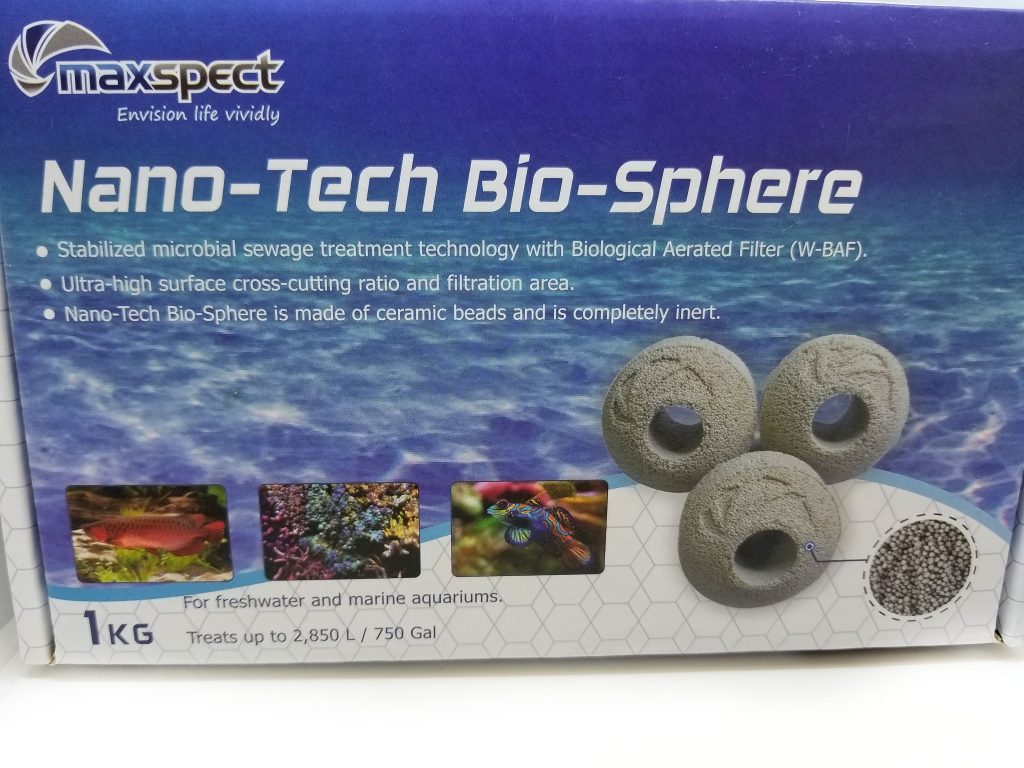
As you can see, it comes in a colorful package. The product’s weight is 1kg (2.2 lbs). What was interesting to me was that this 1kg box is supposed to be good for aquariums up to 750 gallons and that one of these balls is equivalent to 10kg (22 lbs) of liverock. Say what? Are you intrigued yet?

First impressions
The bio-sphere is composed of very hard and compact microbeads and from what I can see with my naked eye, there were no pores (it almost looked like resin) but I am thinking that the pores are microscopic and by inspecting the design, water will flow through more than your traditional rocks, creating more places for your bacteria to leach into and denitrify the nutrients in your tank. I have a minimalist style which consists of three rock islands and I already have tried these types of products to supplement the bacteria levels in my tank to properly break down nutrients and assist with the nitrogen cycle of my tank, so I was curious to see how effective these products were.
I reached out to Maxspect to find about more about them.
The Maxspect Nano-Tech Bio-Media (which includes the bio-sphere, bio-block and upcoming bio-plug) are made 100% of small ceramic beads and are completely inert.
Each bio-sphere has over 220,000 of these small ceramic beads, and each bead has over 2.45 cm2 surface area, which in turn means each sphere has over 54 m2 of surface area (580 ft2). The bio-sphere is created by packing a lot of beads together in a tight formation, and there is only a single point of contact between each bead, so water can very easily flow through the entire structure.
How did you guys determine that one of these spheres is equivalent to 10kg (22 lbs) of liverock?
When we suggest that each bio-sphere can replace 10kg of live rock, we’re using this as our basis. Each of our bio-sphere has 54 m2 surface area while 10kg of live rock only has 2.69 m2, that’s more than 20 times more surface area, so even if you find the most porous live rock on Earth (which perhaps is 2-3 times more porous than the type of limestone we’ve based our calculation on), our statement of 1 bio-sphere can replace 10kg of live rock still stands.
How did this technology came to be utilized in our industry?
This technology has been in used by the sewage treatment industry for a very long time; the stabilized microbial sewage treatment technology is called Biological Aerated Filter (W-BAF). However, in sewage treatment they don’t form these beads into spheres or blocks, they use a sand bed technique which is not very feasible in our aquariums, therefore we’ve made these beads using a proprietary and patented technology into spheres and blocks, which makes it very easy for our hobbyists to use.
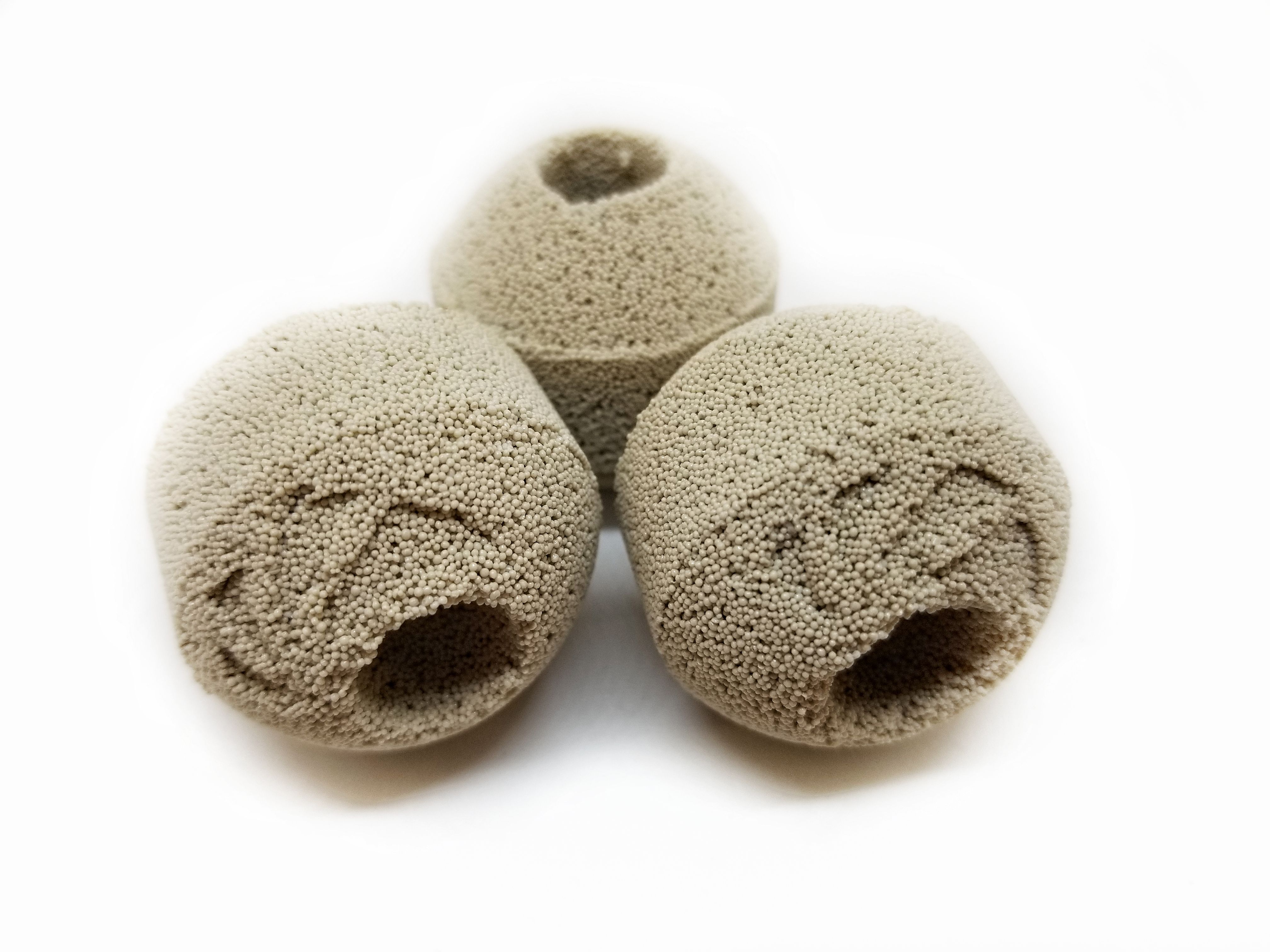 Concerns
Concerns
I have had some experiences where products became too brittle to the point of breaking upon contact. Additionally, while I haven’t had personal experience with this, I have read on reef forums that some units leach out metals into your aquarium.
I spoke to David D’Aquin, owner of Coralvue, who will be distributing this product, and he told me that these will not break unless you smash it with hammer or something of equivalent force. He has also been testing these units for 6 months and didn’t experience any of the units breaking and any of them leaching out unwanted metals into the water.
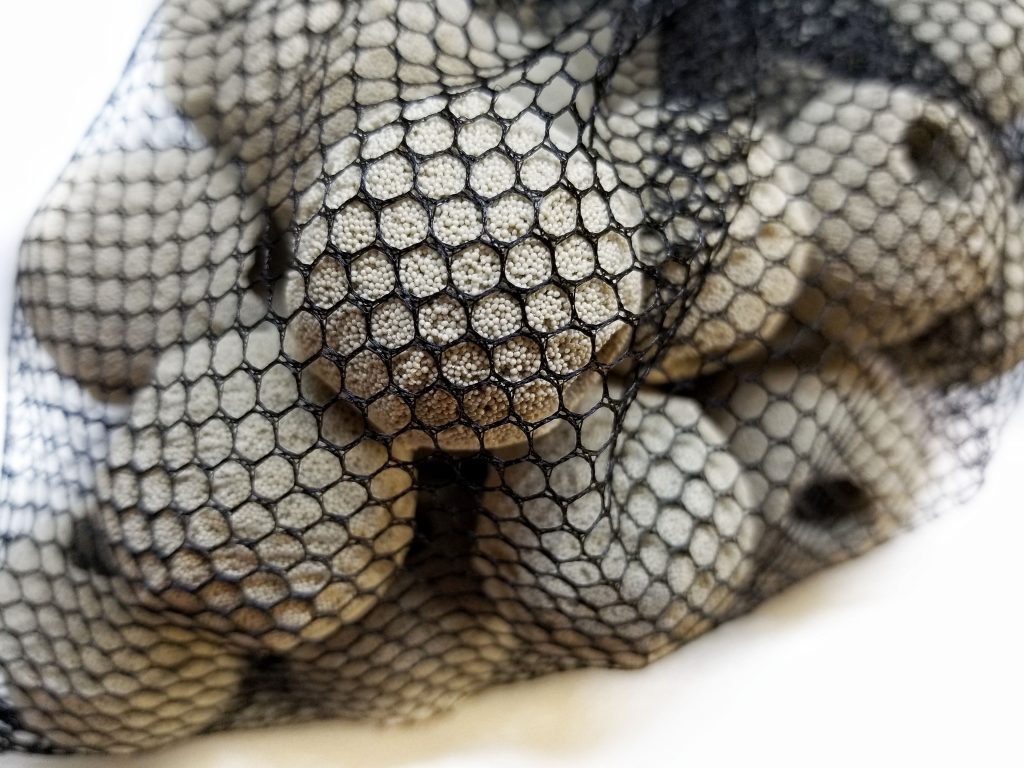
Testing this product out
I used the mesh bag that was provided in the package, rinsed the spheres in RODI water, and placed them in the sump where an adequate amount of flow will go through and left it there for little bit over a month. (yes, I kind of forgot about it until I decided to clean out my algae from turf algae scrubber that I have in my sump.) I collected water from my display and sent it over to ICP lab in Denver, Colorado to test for metals in my system. (By the way, extremely fast turn around time. Sent them out on Thursday evening and received the result via email by Tuesday. Big kudos to you guys!)
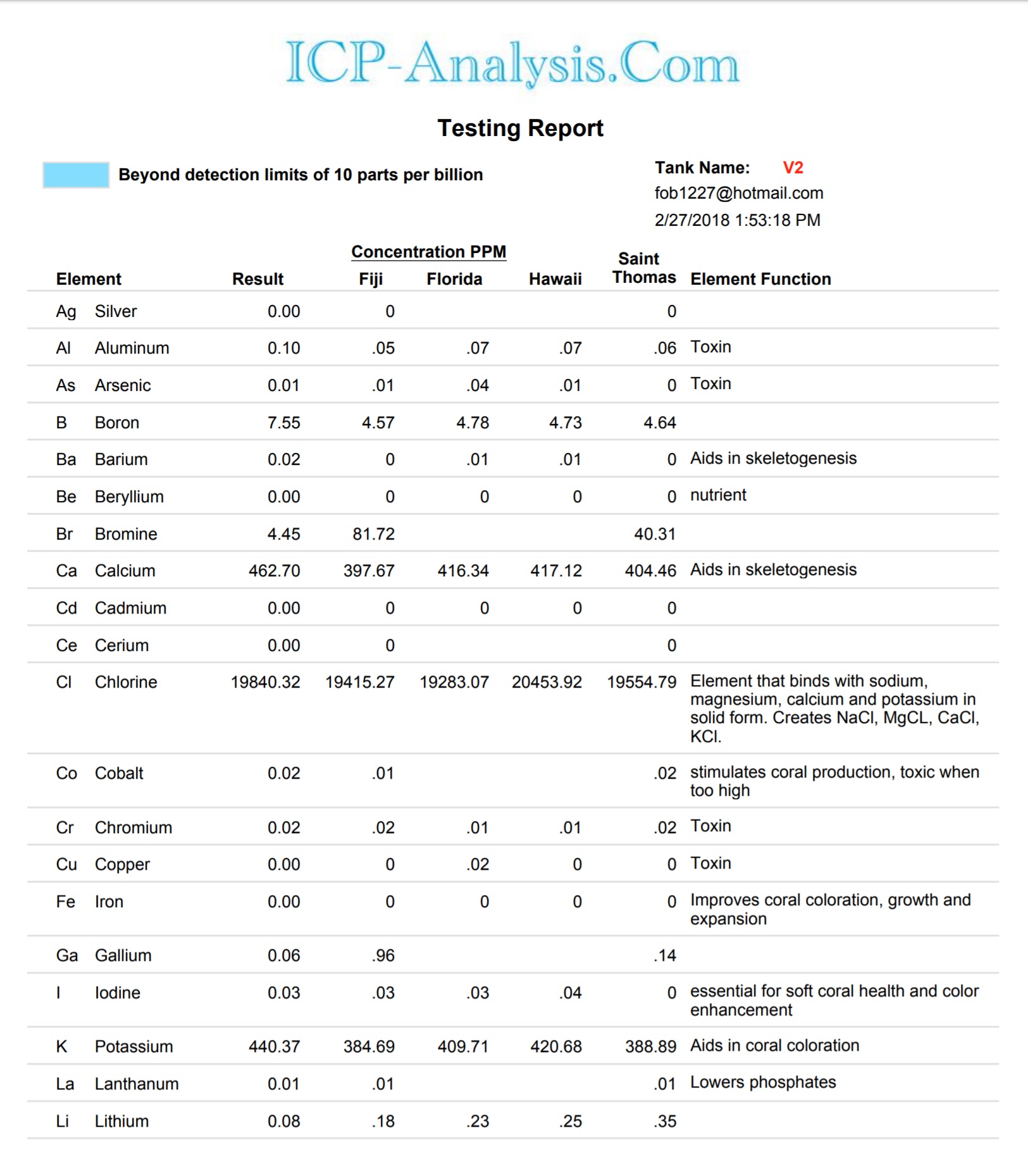
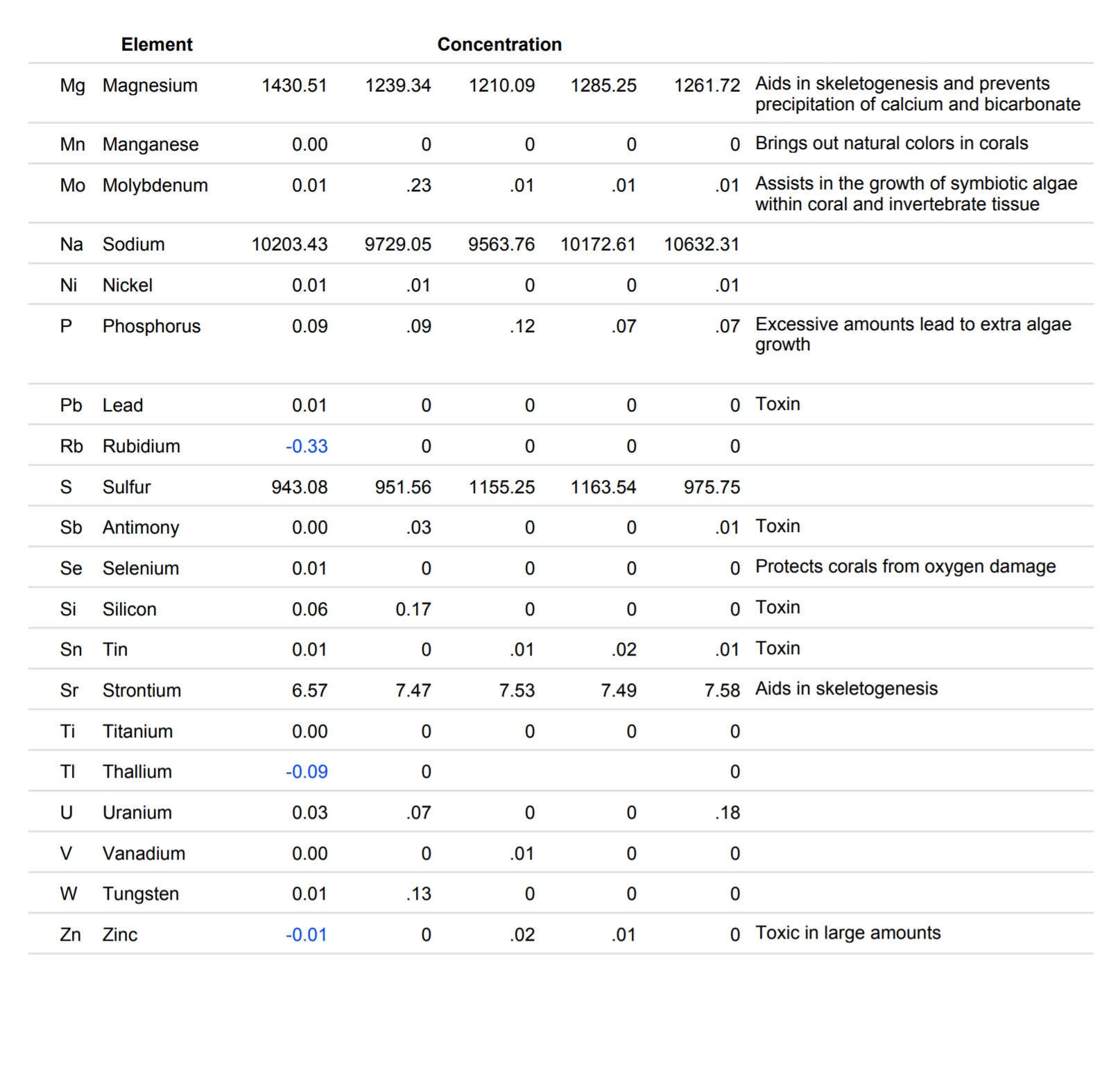
Final words
As you can see, the metals are at extremely low levels and showed no signs of elevation or concern. The only thing that went up for me was the phosphate, but that was expected as I acquired a 7″ Crosshatch Trigger that eats one large bag of LRS Chunky every week. Between that big fish and the poor husbandry that I was giving the tank, I was expecting a much higher phosphate level and was considering aggressive and alternative methods to attack the phosphate. (L. Chloride was one option)
I also tested the durability of the spheres and was happy to report that it was still rock solid and wasn’t breaking. With my aggressive testing, I can conclude that it’s keeping all the levels in check.
If you are in the market for additional help in bacterial filtration, be sure to look into this product.
Happy reefing!









0 Comments